Ants.
As an entomologist at the Canadian Museum of Nature who has studied insects for over 35 years, one of the statistics that always impressed me about ants is just how many of them there are. I’m not talking species—although since we are on the subject, there are about 14 000 named species of ants worldwide (and about 200 in Canada).

What I’m talking about are the numbers of individual ants. Astonishingly, it’s been estimated that there are 10 000 trillion ants alive on Earth at any one time and that if you added up their weights, they would weigh more than any other group of living animals, people included!
Equally impressive is the variety of things ants do: some are farmers, ranchers, hunters, excavators, weavers, slave-makers, harvesters and more. Let’s look at some of these groups more closely, some of them you will also see in the new exhibition Farmers, Warriors, Builders: The Hidden Life of Ants.
Farmers
Huge colonies of leaf cutter ants (Atta spp.) are scattered in the lowland tropical forests of Central and South America. These colonies can be as large as a house, although because they are underground, the size is hard to visualize. (This video in YouTube shows the real size of these underground nests).
The ants are active day and night, often using the same pathways, and I’ve seen places where they have worn trails six inches deep into the soil. They are always busy harvesting leaves of almost any kind of plant and bringing them back to the nest.

What is remarkable is that they are not actually eating the leaves, but using them to grow fungi. In the nest, they mash up the leaves and use them to grow a very specific type of fungus that they then use as their only source of food. They are, in fact, fungus farmers, not leaf eaters.
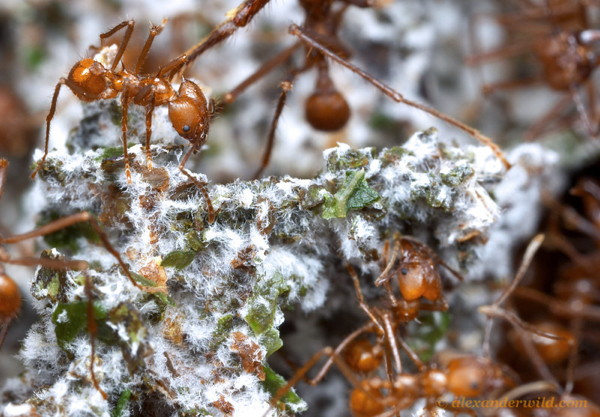
Ranchers
A number of species of ants (Formica spp.) herd and tend other insects, most commonly aphids. As the aphids feed and fill up with sugary plant sap, the ants tap the ends of the aphids’ abdomen with their antennae and the aphids start to exude sweet “honeydew”.
The ants gather the honeydew as an energy source for the colony, and in exchange, the ants guard the aphids from predators. Some ants (Lasius spp.) move aphids around just like we move cows, keeping them in the nest in the winter and moving them out on to plant roots in the summer.
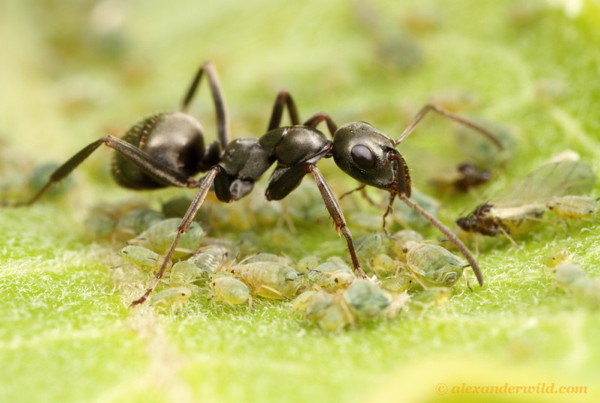
Hunters
Well known are the aggressive African driver ants (Dorylus spp.) and South and Central American army ants (Eciton spp.) that form large raiding columns that chase, capture and kill almost anything that runs out from hiding in front of them.
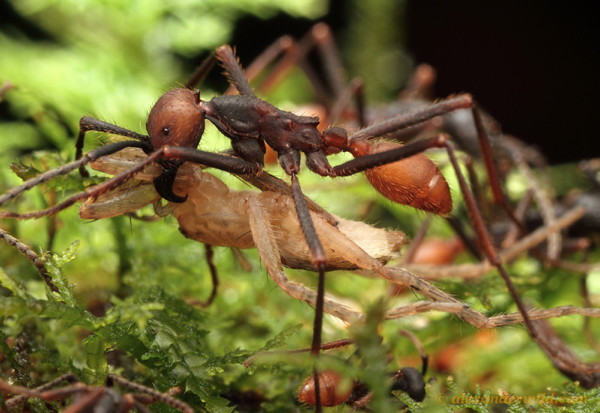
These ants do not form permanent nests, but rather, have a temporary bivouac that moves each day to a new location as the colony moves in search of food. While it’s unlikely that these ants would be able to run down and kill a human as in some of Hollywood’s finest movies, they can catch and kill small vertebrates. Some species of birds follow the ant columns and eat the flying insects flushed out by the ants.
Once in Costa Rica, army ants invaded our cabin, flushing out about 15 scorpions that took refuge on the ceiling. After the ants left, the scorpions went back into hiding… somewhere in the room. GULP!

Equally neat are the trap-jaw ants (Odontomachus spp.), with their large serrated jaws that snap shut when triggered by sensitive hairs at the base of each jaw. I’ve been bitten by these ants and I can tell you, it is painful! And, oh yeah, they also sting at the same time.
Excavators

We’re back to the leaf-cutter ants (Atta spp.) that move mountains of dirt (up to 40 tons) as they build their huge underground nests. These colonies are so big, they even have their own dump: a designated refuse pile where they throw out old leaves and any other garbage from the nest. These nests are easily recognized by the huge pile of dirt with nothing green growing nearby!
Weavers
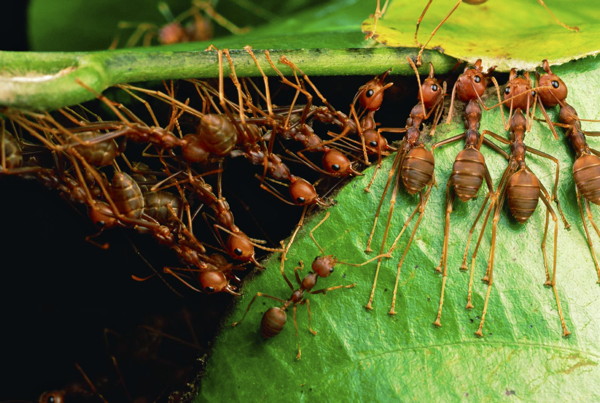
Weaver ants (Oecophylla spp.) are Asian ants that build their nests by sewing live leaves together with silk. Only the larvae can make silk, so the workers pick them up and use them like glue guns. Lines of workers pull leaves together, while others hold the larvae up to stitch them together with silk. Colonies can be huge, with hundreds of nests scattered in numerous trees.

Slave-Makers
Some ants (Polyergus spp.) raid the nests of other species of ants and steal the immatures. But instead of eating them as prey, they let them hatch out as adult ants in the foreign colony. These “slave” ants act like they are at home and start doing all the basic tasks of nest maintenance and looking for food. The slave-making ants cannot eat or survive without their slaves to feed them.
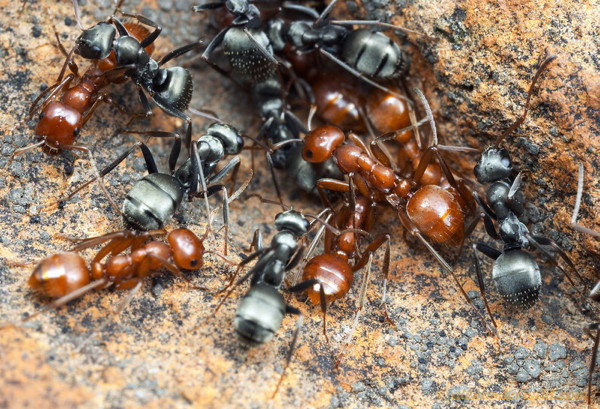
Harvesters
Harvester ants (Pogonomyrmex spp.) collect and stash seeds, which are their main source of food. They are highly protective of these stashes and will defend them with the most painful sting of any North American ant. Luckily, they don’t sting very often.
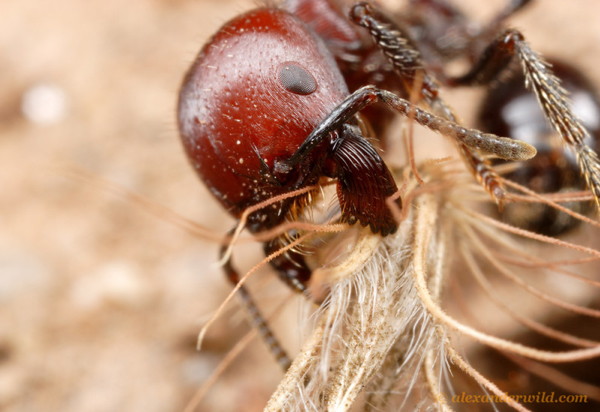

Speaking of painful stings, the Schmidt Index is a listing of the most painful insect stings. Not surprisingly, at the top of the list is the one-inch-long bullet ant (Paraponera spp.) from Central and South America. Its sting has been vividly described as “pure, intense, brilliant pain; like fire-walking over flaming charcoal with a 3-inch rusty nail grinding into your heel”. Wow! Thankfully, I have yet to be stung by one!
You can learn more about the amazing world of ants by visiting the exhibition Farmers, Warriors, Builders: The Hidden Life of Ants, which opens on July 26, 2013, at the museum. Live ant colonies complement the outstanding photographs of Mark W. Moffett.
